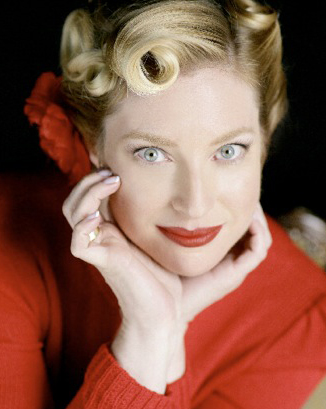
The Modern Butlers’ Journal volume 11, issue 2
International Institute of Modern Butlers
 Message from the Chairman
Message from the Chairman
If you have heard the expression, “What the Butler Saw” and wondered what it referred to, its provenance is an acrimonious divorce case between Lord and Lady Colin Campbell of Scotland in 1886. The key to the trial seems to have been whether their butler could have seen Lady Campbell in a compromising position with the Captain of the Metropolitan Fire Brigade, through the keyhole of the Campbell’s dining room in London. Although both parties were accused of adultery, the fact that Lady Campbell was not granted the divorce implies that the jury, who were taken to that exact keyhole at 79 Cardogan Street, were able to observe adequately the area of the dining room in question in order to give credence to the butler’s claims. Over the intervening 129 years, the phrase “What the Butler Saw” has became a euphemism for sex and voyeurism, and has been used as the title of various books, movies, etc. with that theme.
From the butler perspective, taking sides in a dispute between a married couple is a long-standing no-no. We are privy to events that normally are private moments, and so are expected to see, hear, and speak nothing in order to be allowed to continue in service, even when we do hear and see plenty. Two court cases, mentioned below, are reminders that we are occasionally (sometimes often) put in a position of having knowledge we would rather not have. How the butler manages such moments is the mark of the true butler as opposed to the gossip or worse.
Butlers in the Media
Here is an interesting article based on a report regarding problems the wealthy are having in staffing their stately homes in England. Candidates just don’t seem to be “loyal, deferential and discreet” anymore. “Recruitment and retention are common problems, while some employees are litigious and ready to sue their boss if they feel their rights are breached. Staffing issues—especially if they ever reach the court—can be extremely costly, in terms of time, personal angst, and money.” The advice given in the report to employers is, “It is vital to keep abreast of any new rules to avoid being sued by disgruntled employees. People are becoming increasingly well-informed about their rights and litigious, especially if they have a high-profile employer.” Further advice is to have the employer sign a Non-disclosure Agreement. But what a sorry state of affairs, betraying a general lack of education on the part of employees, and, no doubt, employers, and falling ethics levels in society.
With the Savoy’s media department working hard to promote the hotel through its butler offerings, the PR department of another hotel in London has added their own good words about the profession in relation to their hotel. The sentiments expressed were on target: for instance, the story of their solving a guest’s problem was telling: “One of the most unusual requests we have ever had was helping a distraught guest to locate her lost wedding ring. After retracing her entire day, we finally found it behind the counter at one of the big pharmacies in Piccadilly Circus.” If there be one thing that guests and employers appreciate the most, it is when a butler takes ownership of, and solves, their pressing problems.
Trying to find a butler on Craig’s list and similar avenues is oxymoronic, but when searching for a butler for venues other than private service, it might make sense. Indeed.com is advertising an assistant butler position in a governor’s mansion in the US in Virginia at $32-40K. They claim the national average for assistant butlers is 30K….to which we can only reply, “Indeed? How was that figure established?” It seems to have been based on the salaries of all job titles in their database with the word “Assistant” in them, such as “Engineering Project Assistant.” Perhaps we should re-introduce “Logic” into school curriculums; and if there is not enough time for such a subject, then simply use them to replace the “political correctness” classes.
The Bettencourt trial continues in France, with mentions of the butler secretly recording conversations between his employer and her visitors. Across the Atlantic, similar legal actions are in the offing over a Black Book the butler kept on his employer (who was later convicted as a sex offender) and guests and their activities. In both cases, the butlers broke the golden rule about respecting the privacy of employers and their guests.
There are mitigating circumstances, however: In the case of the French butler, he appears to have been loyal to his employer, making the recordings to protect her interests, which he felt were being worked against by unscrupulous visitors. In the case of the American butler, he refused to hand over his book and served time in prison as a result. If the media are to be believed, he kept the book as insurance against his employer turning against him. Does this mean bribery was also occurring? It might have been. But in any event, the butler did not go public with it. However, his continuing to serve his employer in the full knowledge of the employer’s actions means the butler aided and abetted paedophiles by providing them with butler service. Is that really how one wants to summarize one’s life? “I served a paedophile loyally.”
This is yet another example of the central theme of that great book/movie, Remains of the Day, in which butlers are confronted by the notion that they have misplaced their loyalty and are left at the end with nothing of value to show for their life’s work. We would counsel anyone who finds themselves serving people who are unethical, to find another position and resign; and then make known quietly in the butler community, the unethical nature of that household/principal. If no butler were to provide the support of the profession to such people, then they would be rendered less effective in their nefarious dealings and society, and the profession, that much better off. Perhaps a quiet word in the ear of law enforcement at some later stage would allow them to do their jobs, too, for the betterment of one and all.
A new application joins the pantheon of Butler Thises and Thats: the Express Butler—an electronic pass that can be purchased at a theme park in Germany and which allows one to go to the front of the line.
Placement
Mature domestic couple/caregivers sought for snowbirds for their Ohio estate. Generous package. Email the Institute with your resumes and any questions.
Let’s Talk about Spirits, Part 12
by Amer Vargas
Bourbon
Today we will visit the United States to learn a little bit about bourbon whiskey (not whisky, which is the English spelling for the Scottish brew).
While there is no reliable information on when bourbon was first produced, written records confirm that it was developed into its present form only in the late 19th century.
The origin of the name bourbon is not clear either. Some claim the name comes from Bourbon Street in New Orleans, whilst another line of history asserts that the name comes from Bourbon County, formerly a part of Virginia State but currently belonging to Kentucky, since that State’s reorganization took place in 1792.

So, what is the difference between whisky and bourbon whiskey? Whilst the basic production of both remains the same—a grain mixture that is used to produce a mash that later undergoes fermentation, then double distillation to between 65% and 80% alcohol, before being poured into casks—there are two key elements that differentiate them.
The first is the ingredients: whisky is produced using barley as the main ingredient, while bourbon requires a minimum of a 51% corn, the rest being rye, wheat, and/or malted barley.
The other key difference lies within the aging process: whisky is aged in oak barrels that have been used for aging whisky before, with the casks used several times. Whereas bourbon is aged (usually between 4 and 9 years) in new American white oak barrels, the insides of which are charred with a torch before being filled. The charred wood impregnates the drink with color and aromas that differ significantly from whisky stored in an uncharred barrel.

During the aging process, the barrels are kept in warehouses that can be influenced by the outside weather. The climate temperature expands and contracts the wood of the casks, which thereby imparts different types of flavor in the liquor. The hotter the weather, the more the pores of the wood open and impart its flavor. Thus the barrels that are stored on the top floor of the warehouses, where it’s hotter, create a slightly different flavor from those stored on the bottom floor.
After the maturation time, bourbon is taken out of the barrel, is filtered and can be diluted with water to achieve the desired alcohol by volume, commonly 40%; although legally, it can be left at 80% maximum—so-called “barrel proof” bourbon.
United States Federal laws permit the production of bourbon in the US only by following the steps described above.

Distillers can play with the proportions of the ingredients as long a minimum of 51% corn is maintained; they can also decide on the length of time for fermentation and aging, but they cannot omit any of the steps. This point is very important; for example, there is a common misconception that Jack Daniels is a bourbon whiskey, but its production includes an extra step: filtration through maplewood charcoal before being aged in the charred oak barrels—and this extra step means it is not actually a bourbon.
Bourbon is a very versatile drink. It can be taken straight, diluted with water, on the rocks, mixed with soda, or be an ingredient in cocktails like the Manhattan or a version of the Mint Julep—or as with so many alcoholic drinks, it can be used to impart flavor in cooking.

A personal favorite: Chocolate bread pudding with bourbon and dulce de leche sauce. Enjoy!
Mr. Vargas is the Institute’s Vice President for Europe and can be contacted via AmerVargas at modernbutlers.com
An Enterprising Butler
We have featured the work of this butler in a boutique hotel in Florida, the Fort Harrison, once before, for the little extra touches he puts into common items that are normally simply presented, and which he turns into works of art. He continues to create delicately carved fruits that are themed according to guest interests
and has extended his handiwork to the soaps his high-end suite guests receive.
The attention to detail and care for the guest shine through.
 When it Comes to Housekeeping
When it Comes to Housekeeping
by Professor Richard Ratliff
The Secret to Housekeeping Success
The most important secret to successful housekeeping is disciplined housekeeping routines. The key words are routines and disciplined. It doesn’t matter whether it is a grand house or a modest home.
One household staff can be trained and diligent, but always hurried and behind; and so the house disorderly, badly maintained, and even unclean. Another household staff may seem calm and dignified, perhaps a little slow, by comparison—but their house is orderly, in excellent repair, and spotless. The difference is very likely to be ad hoc daily assignments vis-à-vis well-established routines.
Routines should include order, cleaning, regular maintenance and immediate repairs. Tasks are best outlined for daily, weekly, monthly, seasonal, semi-annual, and annual activities. A written overall schedule would be posted and used, coordinating all the activities.
The primary requirements are (1) that order, cleaning, and maintenance are all covered for the entire house; (2) that these activities follow a regular routine; (3) that time allotments are realistic for thorough and disciplined, but unhurried work; (4) that routines are followed rigorously; and (5), that repairs be made immediately. Housekeeping is a full-time job. If major unexpected tasks demand attention, consider hiring temporary staff or tradesmen, rather than compromise the housekeeping routines.
Specific frequency of different activities is less important than disciplined regularity. One staff may attempt daily dusting, another weekly—depending upon preferences and circumstances. In fact, disciplined weekly dusting may be superior to haphazard and interrupted “daily” dusting; and superior to actual daily dusting if other tasks go undone.
One further point: What is the best vacuum cleaner? Answer: The one that is used.
The result is a more attractive home, a happier employer, and a more contented household staff.
Of Butlers and Roses, Part 10 of 20
by GJ dePillis
Pruning different types of roses
Pruning roses properly is critical to their flourishing, so here are the basic rules.
- HYBRID TEA ROSE & FLORABUNDA: These roses grow like a bush. Prune established plants down to 5 inches
- OLD or ENGLISH ROSE: Cut back the height to one third (i.e. cut a three-foot tall bush to one-foot). Then cut back the side shoots to about 4 inches in length and remove dead wood (die back). They should not be pruned too much as the wood grows very slowly.
- WEEPING STANDARDS: The goal is to have the roses “weep”—meaning have the shoots grow downward. If they grow upward, tie them down into position so they grow down or simply remove (cut off) the shoot to maintain the balance of the plant.
- SPECIES or MODERN ROSES: These rarely require pruning except to remove dead wood. If it grows too big for the area it is in, try to cut whole branches down to the connecting cane.
- REPEAT FLOWERING CLIMBING ROSES: Cut back to 4 inches (10cm) any branches that have already held a bloom, then tie the main growth into position so it can “climb up” the supporting structure. Rambling roses require very little pruning and only need to be cut back when they become too large for the area. You can train ramblers to climb a bit. Remove main shoots and cut back side shoots to about 4 inches.
- GROUND COVER ROSES: Only remove dead wood and trim the borders to keep neat. As a note, most of these varieties are very disease resistant.
- MINIATURE ROSES: After a few years, cut back the oldest stems and cut back roses which seem to have forgotten to remain “miniature.”

AFTER PRUNING: Remember to “fluff up” the soil with a fork—about 1 or 2 inches deep—to aerate it and remove tiny weeds. Then apply a long term fertilizer. Then, layer some compost or mulch on top. This sequence should give good blooms by summer time.
REMOVE SUCKERS*: Most roses are grafted onto hardy rootstock. This means that suckers which form are from a rose plant that you do not want. For this reason, always cut back sucker shoots. Remember to take off the bark so they don’t come back. Also note that some rose varieties can be mistaken for a sucker (most suckers have groupings of seven leaves to a branch, but so do some roses, such as Albas), so don’t be suckered into an ill-advised spring cleaning.
Until next time, happy pruning!
*A shoot at the base of a plant, especially coming from the root below ground level.
Ms. dePillis is a freelance contributor to the Journal who is based on the West Coast of the United States. She can be reached via depillis at gmail.com
Consulting the Silver Expert
by Jeffrey Herman
Q: Can I add a patina to silver or does it have to be done professionally?
A: I would advise against anyone other than a silver conservationist performing this application, for these reasons: 1) These chemicals are very toxic; 2), they are difficult to apply and highlight.
Mr. Herman continues to offer his services to our readers for any questions you may have about the care of silver. Either call him at (800) 339-0417 (USA) or email jeff at hermansilver.com
The Institute is dedicated to raising service standards by broadly disseminating the mindset and skills of that time-honored, quintessential service provider, the British Butler, adapted to the needs of modern employers and guests in staffed homes, luxury hotels, resort, spas, retirement communities, jets, yachts, & cruise ships around the world.






